Related Research Articles

A prisoner of war (POW) is a person who is held captive by a belligerent power during or immediately after an armed conflict. The earliest recorded usage of the phrase "prisoner of war" dates back to 1610.
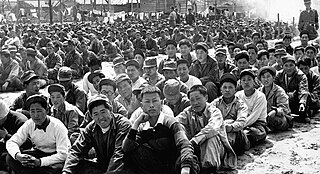
A prisoner-of-war camp is a site for the containment of enemy fighters captured by a belligerent power in time of war.
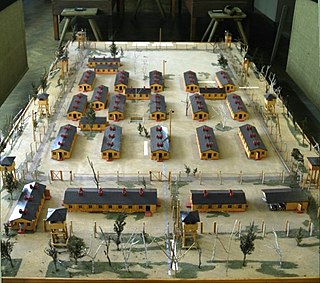
Stalag Luft III was a Luftwaffe-run prisoner-of-war (POW) camp during the Second World War, which held captured Western Allied air force personnel.
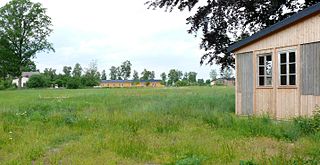
Stalag X-B was a World War II German prisoner-of-war camp located near Sandbostel in Lower Saxony in north-western Germany. Between 1939 and 1945 several hundred thousand POW's of 55 nations passed through the camp. Due to the bad conditions in which they were housed, thousands died there of hunger, disease, or were killed by the guards. Estimates of the number of dead range from 8,000 to 50,000.
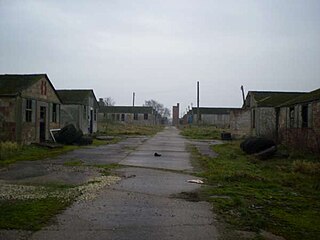
Pingley POW camp is one of the few prisoner of war camps in the United Kingdom that remains in good condition. Unlike the relatively nearby Eden Camp which is preserved as a Second World War museum, Pingley Camp lies in a semi derelict state in the grounds of Pingley Farm. It is situated on the outskirts of Brigg, Lincolnshire.

Camp Concordia was a prisoner-of-war camp that operated from 1943–1945. Its location is two miles north and one mile east of Concordia, Kansas. The camp was used primarily for German Army prisoners during World War II who were captured in battles that took place in Africa.
Camp Atlanta was a World War II camp for German prisoners of war (POWs) located next to Atlanta, Nebraska. Over three years, it housed nearly 3,000 prisoners. After the war, a number of soldiers and prisoners from the camp returned to live in the area.
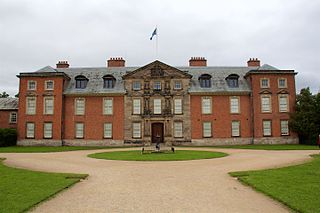
Dunham Massey Hall, usually known simply as Dunham Massey, is an English country house in the parish of Dunham Massey in the district of Trafford, near Altrincham, Greater Manchester. During World War I it was temporarily used as the Stamford Military Hospital.

Approximately three million German prisoners of war were captured by the Soviet Union during World War II, most of them during the great advances of the Red Army in the last year of the war. The POWs were employed as forced labor in the Soviet wartime economy and post-war reconstruction. By 1950 almost all surviving POWs had been released, with the last prisoner returning from the USSR in 1956. According to Soviet records 381,067 German Wehrmacht POWs died in NKVD camps. A commission set up by the West German government found that 3,060,000 German military personnel were taken prisoner by the USSR and that 1,094,250 died in captivity. According to German historian Rüdiger Overmans ca. 3,000,000 POWs were taken by the USSR; he put the "maximum" number of German POW deaths in Soviet hands at 1.0 million. Based on his research, Overmans believes that the deaths of 363,000 POWs in Soviet captivity can be confirmed by the files of Deutsche Dienststelle (WASt), and additionally maintains that "It seems entirely plausible, while not provable, that 700,000 German military personnel listed as missing actually died in Soviet custody."

Dunham Massey railway station was a station in England, serving the Dunham Massey. The station opened in 1854 and closed in 1962.
Dunham W&SR railway station served Dunham Town between 1854 and closure in 1855.
Camp Rupert was a World War II prisoner of war camp in the western United States, located in Minidoka County, Idaho, west of Paul. It was built for $1.5 million, which was everything needed for a city of 3,000: barracks, water, sewer, and a hospital. The first POWs were Italian and were received in May 1944, and 500 German POWs arrived that September.

Soviet prisoners of war in Finland during World War II were captured in two Soviet-Finnish conflicts of that period: the Winter War and the Continuation War. The Finns took about 5,700 POWs during the Winter War, and due to the short length of the war they survived relatively well. However, during the Continuation War the Finns took 64,000 POWs, of whom almost 30 percent died.

Members of the German military were interned as prisoners of war in the United States during World War I and World War II. In all, 425,000 German prisoners lived in 700 camps throughout the United States during World War II.
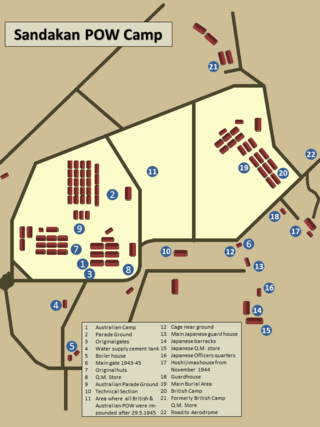
The Sandakan camp, also known as Sandakan POW Camp, was a prisoner-of-war camp established during World War II by the Japanese in Sandakan in the Malaysian state of Sabah. This site has gained notoriety as the Sandakan Death Marches started from here. Now, part of the former site houses the Sandakan Memorial Park.
Members of the United States armed forces were held as prisoners of war (POWs) in significant numbers during the Vietnam War from 1964 to 1973. Unlike U.S. service members captured in World War II and the Korean War, who were mostly enlisted troops, the overwhelming majority of Vietnam-era POWs were officers, most of them Navy, Air Force, and Marine Corps airmen; a relatively small number of Army enlisted personnel were also captured, as well as one enlisted Navy seaman, Petty Officer Doug Hegdahl, who fell overboard from a naval vessel. Most U.S. prisoners were captured and held in North Vietnam by the People's Army of Vietnam (PAVN); a much smaller number were captured in the south and held by the Việt Cộng (VC). A handful of U.S. civilians were also held captive during the war.

Camp Hearne, located in Hearne, Texas was a prisoner-of-war camp during the Second World War. Commissioned in 1942, Camp Hearne was one of the few camps that housed prisoners from all three Axis powers during the conflict. After its decommissioning and piecemeal sell-off by the United States government, the site remained abandoned for 70 years. Today there stands a single replica of a barracks on the site of the former camp, which contains a museum.

The Dunham Massey Hall sundial is a lead sculpture depicting a kneeling Black man holding a sundial on his head. It was created during the early 18th century, and until 2020 stood outside Dunham Massey Hall, a stately home in Cheshire, England.
References
Coordinates: 53°23′06″N2°22′32″W / 53.3850945°N 2.375536°W